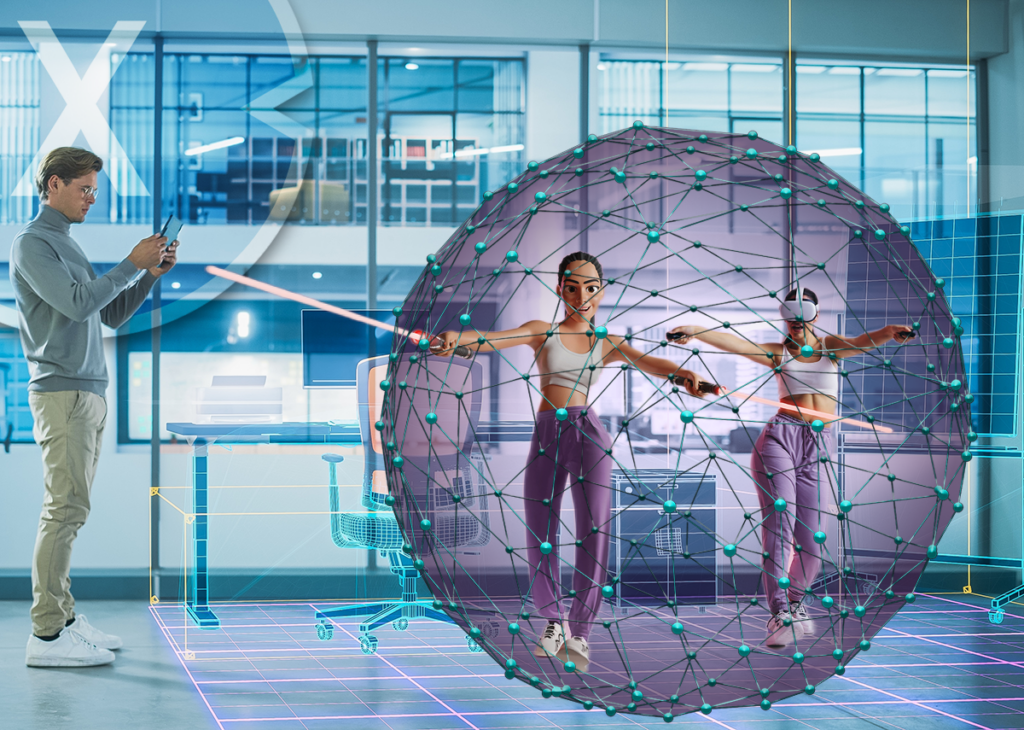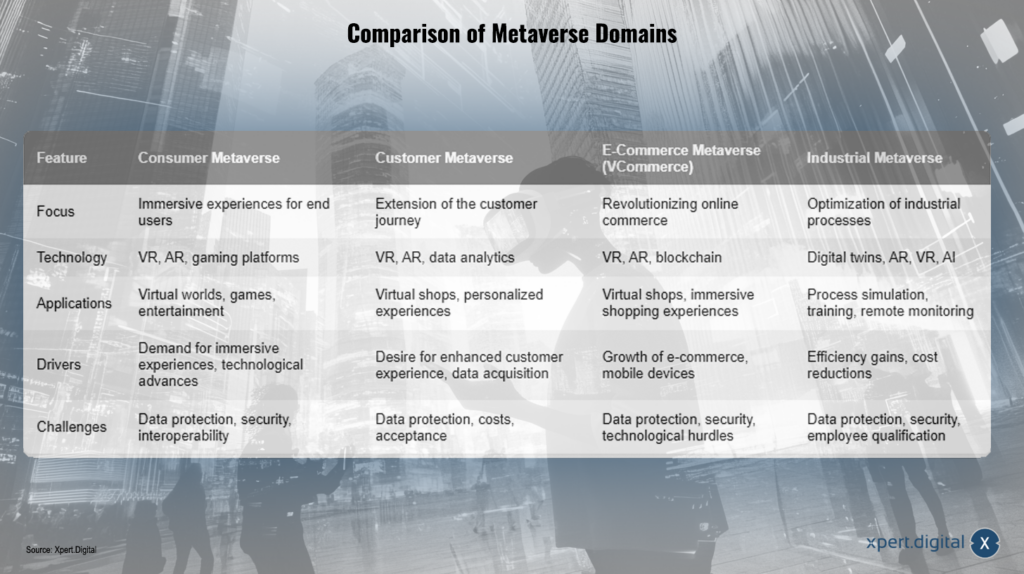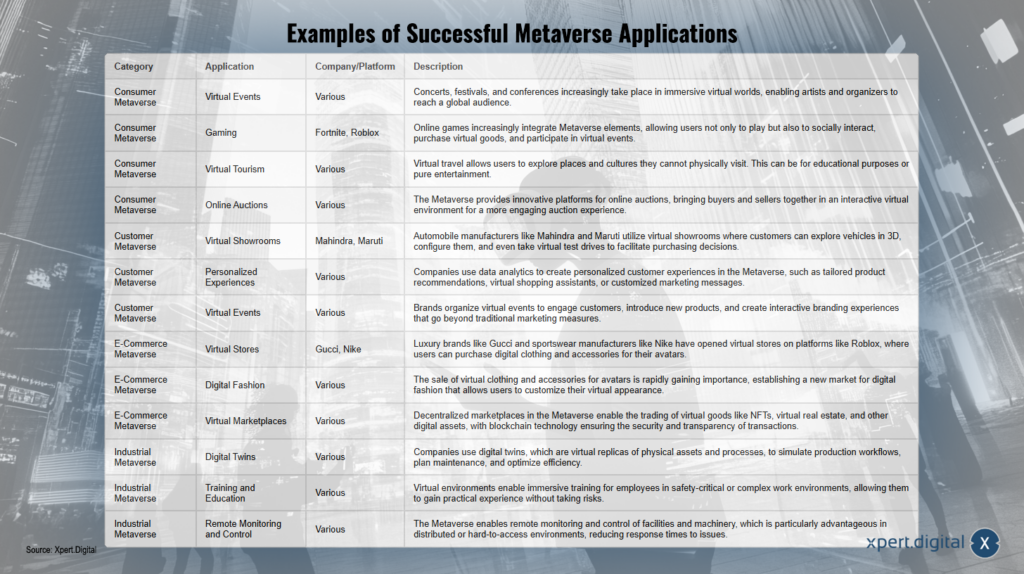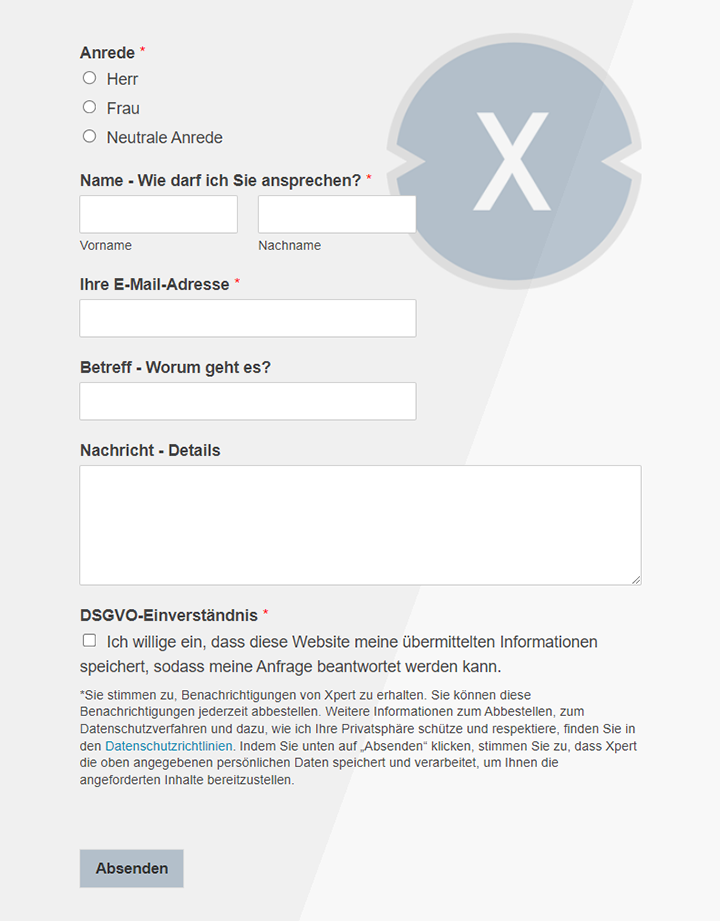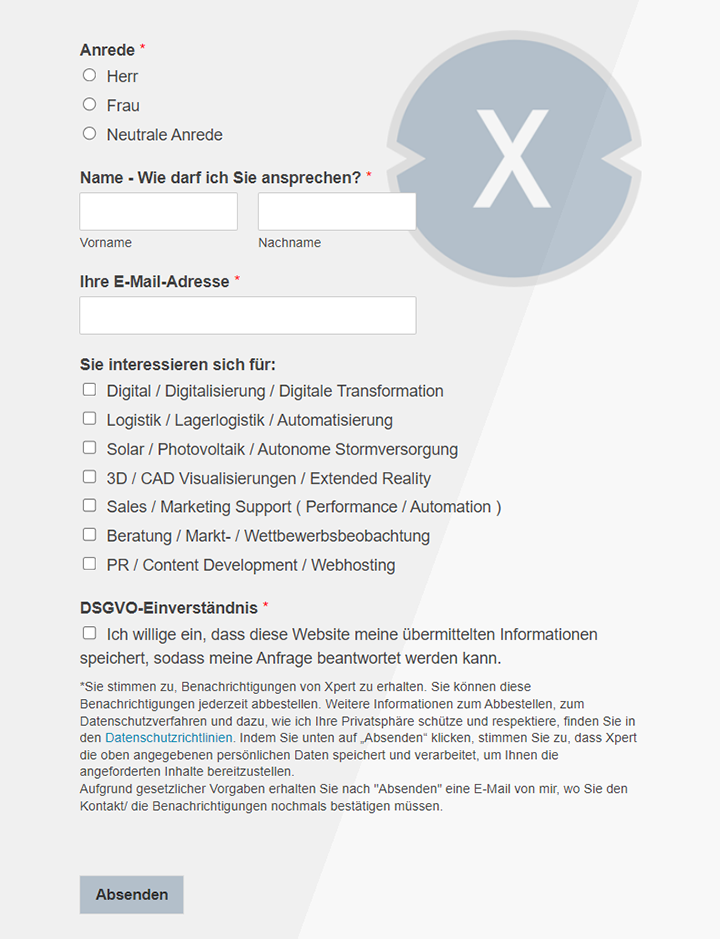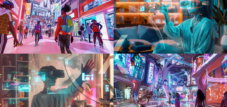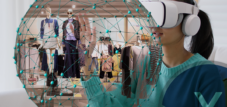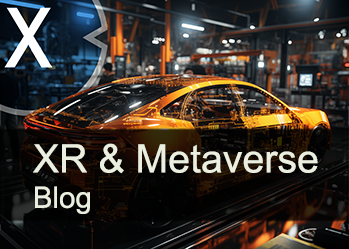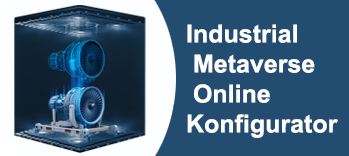Metaverse Development: A Comparison Between Consumer, Customer, E-Commerce (V-Commerce) and Industrial Metaverse
Xpert pre-release
Language selection 📢
Published on: January 14, 2025 / update from: January 14, 2025 - Author: Konrad Wolfenstein

Metaverse Development: A Comparison Between Consumer, Customer, E-Commerce (V-Commerce) and Industrial Metaverse – Image: Xpert.Digital
From Consumer to Industrial: The fascinating diversity of the Metaverse worlds at a glance
Metaverse Development: A Comprehensive Overview of the Consumer, Customer, E-Commerce (V-Commerce), and Industrial Metaverse
The world of the Metaverse has undergone rapid development in recent years, opening up new opportunities for both companies and private individuals. However, “Metaverse” is not the same as “Metaverse”, because different areas can be distinguished, each with their own goals, technologies and fields of application. This report details the developments of the Consumer Metaverse, the Customer Metaverse, the E-Commerce Metaverse (also called V-Commerce), and the Industrial Metaverse. This is followed by a comparison that shows key similarities and differences and provides an outlook on future developments and challenges. The focus is always on what opportunities open up for companies and users and how the various use cases can impact the economy, society and everyday life.
1. Definition and meaning of the Metaverse
The term metaverse generally refers to a three-dimensional, virtual environment in which people can interact in real time using avatars or technical aids. Technologies often used for this are virtual reality (VR) and augmented reality (AR), but also other immersive concepts such as mixed reality or haptic interfaces. The Metaverse is more than a simple continuation of existing digital platforms. It is characterized by its comprehensive, networked structure in which the physical and virtual worlds merge into an almost seamless unit. Experts assume that these new digital realities will fundamentally transform coexistence, the world of work and commerce in the future.
The Metaverse is suitable for a variety of uses. This allows companies to optimize their production processes, improve customer experiences, develop new digital goods or offer further training for employees. Consumers, in turn, have the opportunity to shop, play, attend concerts or exchange ideas with other people in virtual worlds. The great potential and diverse fields of application mean that more and more industries are viewing the Metaverse as a future growth market.
Suitable for:
2. The Consumer Metaverse
The Consumer Metaverse is primarily aimed at end consumers who are looking for immersive experiences in virtual worlds. The focus here is on entertainment, but the term encompasses much more than just gaming and leisure. The consumer metaverse also has potential implications for retail, urban planning, and access to healthcare services.
Immersive experiences for consumers
In the Consumer Metaverse, users can immerse themselves in virtual environments using VR or AR glasses, mobile devices or classic computer setups. Examples include virtual concerts, fashion shows, gaming events and even entire virtual cities in which you can move freely. Companies design digital spaces in which they present products in attractive 3D landscapes. Gamification approaches are often used here, in which customers can interact with brands and products in a playful way.
Potential changes in urban planning and the design of physical spaces
As people spend more and more time in virtual environments, this could lead to new requirements in the long term when designing physical buildings, public spaces or living areas. New urban planning concepts already take into account that hybrid interactions are made possible in physical and digital form. For example, shopping centers could be expanded virtually so that some customers view and personalize products in the metaverse before picking them up later in brick-and-mortar stores.
Improved access to healthcare services
Virtual environments also offer new opportunities in the healthcare sector: telemedicine, virtual consultations and digital rehabilitation programs make it easier for patients to access treatment. Special VR programs can also support psychotherapeutic applications. A person affected can, for example, B. reduce fears in a controlled virtual environment. One doctor said: “We are at the beginning of a revolution in medicine in which we can offer safe and effective treatment formats thanks to virtual environments.”
New forms of entertainment, education and mental health
The consumer metaverse opens up countless ways for people to be entertained and learn. Virtual museums, digital galleries and online workshops bring art, culture and education into the home in new and creative ways. Learning content can be conveyed in the form of interactive simulations, and the field of mental health also benefits from immersive opportunities for relaxation, meditation or therapy.
Advances in AR and VR
The rapid development of hardware and software in the AR and VR areas will drive the consumer market even further. New AR glasses that are lighter, more powerful and more comfortable to wear enable completely new experiences in real time. In the future, it may be possible to expand or modify buildings in the neighborhood in the real world by overlaying virtual content and sharing it with other people.
Importance of large technology companies
Some of the largest tech companies in the world are supporting the expansion of the consumer metaverse. They rely on research and development in the areas of VR, AR and AI to create the most realistic digital worlds possible. A spokesman for a well-known tech company said: “Our vision is to give users a feeling of presence in virtual spaces that is as intense as if they were physically standing in another place.”
Use for internal purposes and onboarding
Companies are increasingly using the consumer metaverse not only in their relationship with the end consumer, but also internally. For example, some companies offer virtual onboarding to integrate new employees into the team quickly and entertainingly. A human resources manager commented: “With our new virtual onboarding environments, we are making onboarding an experience – and our employees get to know each other in a playful way.”
Gamification and mini-games
Gamification is a central building block of the consumer metaverse. By using small games, competitions or bonus programs, companies want to increase interaction with their brands. With successful campaigns, users win virtual points or discounts that they can redeem in online shops or in brick-and-mortar stores. This means that brand messages are conveyed in an entertaining way while consumers actively engage with the products.
Suitable for:
3. The Customer Metaverse
The Customer Metaverse is aimed at enriching the entire customer journey with virtual touchpoints and thus addressing customers in a new, interactive way. Unlike the consumer metaverse, the focus here is primarily on the direct interaction between companies and customers - from the initial search for information to the purchase and beyond.
Expansion of the customer journey
In the Customer Metaverse, customers can visit virtual rooms to find out about products, inspect them in 3D form or visualize them in their own environment using AR. This can be the digital twin of a store or special showrooms that only exist in the Metaverse.
Holistic customer view
Companies analyze the behavior of avatars and the interactions of their customers in these virtual worlds to gain a holistic picture of what really moves people. For example, B. Click paths, interaction times or preferred products are examined. These insights are incorporated into the personalization of offers and the fine-tuning of the customer experience.
Improved digital employee experience
The customer metaverse does not have to be limited to the relationship between companies and customers. Internal collaboration can also be designed innovatively using virtual environments. For example, employees in digital spaces can work together on concepts, test prototypes or run through complex tasks in a simulation. This not only creates new opportunities for collaboration, but also a sense of belonging that arises regardless of physical location.
Onboarding and training
More and more companies are using the Metaverse to train and train new employees. In such a virtual environment, for example, a digital factory can be recreated so that teams can train processes in real time. In this way, employees get to know complex machines and processes without having to be on site. One HR manager commented: “The combination of realistic simulations and direct feedback loop makes our training more efficient and sustainable.”
New hardware and software
The devices that customers and employees use to access the Metaverse are also constantly evolving. In addition to VR headsets, several major manufacturers are working on mixed reality glasses that seamlessly integrate digital content into the real environment. These advanced glasses are intended to provide the most natural viewing and interaction experience possible.
Suitable for:
4. The E-Commerce Metaverse (V-Commerce)
The e-commerce space has exploded in recent years, and the metaverse is creating an even more immersive form of online shopping known as v-commerce. In the e-commerce metaverse, customers can visit digital shopping worlds where they can view, try out and buy goods directly.
Strong market growth
The e-commerce market in the Metaverse is growing rapidly and offers companies a variety of opportunities to expand their existing sales channels with virtual showrooms and shops. The immersive nature of this world attracts people. In the Metaverse you can not only browse through 3D environments, but also directly interact with products and exchange ideas with other users.
Integration of blockchain technology
Trust is essential in online trading. The Metaverse therefore often relies on blockchain-based solutions to make transactions secure and transparent. Digital tokens, cryptocurrencies or other blockchain-based payment methods are becoming increasingly relevant so that ownership and transactions are documented in an unchangeable manner.
Virtual shops and showrooms
In a three-dimensional world, brands can create entirely new types of digital businesses. Everything is possible, from futuristic showrooms where avatars can try on products to realistic replicas of existing stores. A marketing manager at a fashion company said: “Our customers value the opportunity to try out items of clothing using their avatars before purchasing, without having to go to the store.”
Social interaction and social commerce
A key advantage of Metaverse compared to classic online shopping is direct social interaction. You can meet with friends in a virtual space, look at products together or get live advice. This creates an atmosphere that is reminiscent of strolling together on a shopping street. At the same time, companies can use these interactions to receive direct feedback and make personalized recommendations.
Growth of live streaming and social commerce
The metaverse becomes even more lively via live streams with an integrated purchase option. Customers take part in live product demonstrations and have the opportunity to purchase goods directly in the stream. This creates an event character that many find very appealing. Retailers thus combine entertainment with sales promotion.
Role of fast internet connections
The expansion of new mobile communications standards and broadband networks enables v-commerce to operate more smoothly. Fast internet connections are the key to smooth real-time interactions and high-resolution displays. For example, customers can seamlessly stroll through virtual shops without being slowed down by long loading times.
Virtual tours
Another innovation that is generating interest in the e-commerce metaverse is virtual tours of digital stores, museums or even factories. This gives customers a realistic impression of products or production processes and thus strengthens their trust in companies.
Suitable for:
5. The Industrial Metaverse
While the Consumer, Customer and E-Commerce Metaverse is primarily aimed at interactions with end consumers or customers, the Industrial Metaverse is about optimizing processes in industrial manufacturing, logistics and other sectors of the economy.
Improved safety and efficiency
The Industrial Metaverse uses AR and VR solutions that enable employees in factories and companies to interact with virtual prototypes, visualize simulated structures and collaborate with colleagues at remote locations in real time. The virtual replica of a production facility - often referred to as a digital twin - makes it possible to identify problems at an early stage and refine processes without having to intervene in real production.
Immersive engineering solutions
Large corporations in the fields of industrial software and high-tech optics are working together on immersive engineering solutions that combine sophisticated head-mounted displays with software for product development, simulation and process control. This allows complex systems to be visualized and tested virtually. An engineer reported: “In the Industrial Metaverse, we can put systems through their paces weeks or months before they are put into operation.”
Increasing acceptance in companies
More and more companies around the world are recognizing the benefits that the Industrial Metaverse brings. This includes lower prototyping costs and faster time to market for new products. The maintenance and repair of existing systems is also made easier because technicians can access digital twins and locate potential weak points.
Dynamic and intelligent ecosystems
By networking different systems and data sources, an increasingly dynamic and intelligent ecosystem is created in the Industrial Metaverse. Production data flows seamlessly into software solutions that reveal bottlenecks and optimization potential in real time. If a supplier part fails, the system can automatically search for alternatives and reschedule production.
Wide application scenarios
The Industrial Metaverse covers a wide spectrum: from product development and the operation of machines to supporting employees and supply chain management. Employees can learn how to operate machines or carry out complex maintenance work in virtual training environments. At the same time, processes can be monitored in real time and optimized using AI algorithms.
GIS technology as a basis
An important building block for the Industrial Metaverse is GIS (Geographic Information System) technology, which allows data to be recorded and managed in a spatial context. For example, terrain, streets, factory halls or logistics chains can be digitally mapped. By combining such geographical and infrastructural data with real-time information, production processes can be precisely planned and monitored.
Suitable for:
🗒️ Xpert.Digital: A pioneer in the field of extended and augmented reality
Comparison of Metaverse areas
In order to better understand the different orientations of the Metaverse, it is worth comparing a few key points.
Differences and similarities
target group
- Consumer Metaverse: End consumers looking for entertainment and social interaction
- Customer Metaverse: People along the entire customer journey, with a focus on purchasing decisions
- E-Commerce Metaverse: Online retail shoppers who want immersive shopping experiences
- Industrial Metaverse: Companies, engineers, technicians, logisticians and other specialist personnel
Use cases
- Consumer Metaverse: Social gaming, virtual events, entertainment and leisure offerings
- Industrial Metaverse: increasing efficiency in production processes, digital twins, repair and maintenance optimization
Technologies
- Consumer Metaverse: Mainly immersive technologies such as VR and AR, often combined with gamification
- Industrial Metaverse: Extended to include digital twins, IoT, AI-powered simulation
Commonalities
- Immersive technologies: All areas are based on VR, AR or similar concepts to offer people the most realistic interaction possible in digital environments.
- Data analysis: User data and process data are the focus of personalizing experiences or making processes more efficient.
- High transformational power: There is enormous potential in all areas to revolutionize how we live, shop, communicate or produce.
Drivers and challenges
driver
- Technological advances: Increasingly powerful processors, displays and AI systems form the basis for creating convincing and lifelike simulations in the Metaverse.
- Changing user needs: A growing number of people are looking for immersive experiences, virtual interactions and digital communities because the classic Internet seems too passive for many.
- Economic advantages: Companies expect new sources of revenue and increased efficiency through the metaverse. Digital goods, services and training are available regardless of location.
- Psychological factors: Status, self-expression and curiosity about innovative products play a role, especially in the consumer market. Simply purchasing special avatars or rare digital clothing can be an attraction for people.
challenges
- Data protection and security: In virtual worlds, people interact closely with each other, exchange data and carry out transactions. Given the complexity of the metaverse and increasing levels of connectivity, privacy and cybersecurity are particularly at risk.
- Interoperability: In order for users to be able to take their avatars, digital goods or currencies from one platform to another, open standards and compatible systems are required.
- Ethical questions: Who owns digital goods? How can border crossings (e.g. bullying, fraud) be sanctioned in a completely virtual world? Such questions have not yet been conclusively answered.
- Cost and access: High-quality VR or AR hardware is often still expensive, and the necessary infrastructure is not available everywhere. This can contribute to the digital divide if certain groups are excluded from the metaverse.
- User experience: Virtual realities can overwhelm inexperienced users or even lead to so-called cybersickness if, for example, movements in virtual space do not exactly match body perception.
Examples of successful Metaverse applications
The practical implementation of the Metaverse in the areas mentioned is already diverse today. A few selected examples illustrate how strongly companies and institutions are concerned with the topic.
1. Consumer Metaverse – Virtual events and concerts
Large events such as concerts, festivals and trade fairs are increasingly being relocated to the Metaverse. Music fans enter virtual arenas, meet up with friends, buy merch for their avatars, and experience concerts in ways that couldn't be replicated in the real world.
2. Consumer Metaverse – Gaming
Video games such as open online worlds integrate metaverse elements by allowing players to create their own content, trade digital goods or influence gameplay in globally networked communities.
3. Customer Metaverse – Virtual Showrooms
Automobile manufacturers and other industrial companies are building virtual showrooms in which customers can experience products such as cars in realistic 3D models. Test drives take place in interactive scenarios in which those interested simulate different environments (e.g. city traffic, country roads, rainy weather).
4. Customer Metaverse – Personalized experiences
Companies collect usage and behavioral data to create tailored offers in the metaverse. For example, a food company can automatically add an avatar's favorite products to the digital shopping cart.
5. E-Commerce Metaverse – Virtual Stores
Luxury brands and major fashion houses are opening online stores in the Metaverse. Customers stroll between virtual shelves, try on items of clothing using avatars or get advice from digital assistants.
6. E-Commerce Metaverse – Virtual Marketplaces
In addition to the classic mono-brand stores, marketplaces are being created where small and large retailers offer their virtual goods. From digital art to fashion to fan articles, the spectrum is almost unlimited.
7. Industrial Metaverse – Digital Twins
Machines and complex systems are modeled virtually so that engineers can simulate processes before expensive prototypes are created. This reduces costs and prevents potential errors.
8. Industrial Metaverse – Training and education
Employees learn in virtual factories how to control machines or carry out maintenance. Dangerous situations can also be simulated to make safety training more realistic.
9. Industrial Metaverse – Remote monitoring and control
Production processes, logistics chains or vehicles can be controlled remotely without employees having to be on site. Sensory data from the real system is fed directly into the digital twin so that intervention can be made in real time if necessary.
Future development
The future of the Metaverse is dynamic and multifaceted. Experts and companies agree that we are still at the beginning of a development that will permeate many areas of everyday life and industry in the next few years.
Consumer Metaverse
- More immersive experiences: Advances in VR and AR will continue to increase the level of immersion. More realistic graphics, higher quality displays and haptic suits could make immersion in virtual worlds so believable that you physically forget you are in a digital space.
- Integration into everyday life: AR applications may become as commonplace as smartphones are today. You could, for example, For example, you can visualize the way home, place products virtually in your own home or connect with other people in real time.
- New business models: In addition to the sale of virtual goods, hybrid formats will establish themselves in which physical and digital products are linked together. For example, you purchase an exclusive VR jacket for the avatar and at the same time receive a limited real example.
Customer Metaverse
- Personalization and AI: Artificial intelligence will play an increasingly important role in understanding the behavior of customers in the metaverse and designing tailored experiences for them. An AI assistant could guide users through the metaverse and automatically suggest products that fit their lifestyle.
- Integration of data: In the future, companies will combine data from real and virtual customer behavior. This creates a more comprehensive picture that allows precise predictions about trends and makes the customer experience more seamless.
- New forms of interaction: Whether customer service, community events or social shopping parties – the virtual contact points are becoming diverse and personalized. There will also be formats that no one has yet predicted, such as interactive brand worlds with role-playing elements or globally networked customer and fan communities.
E-Commerce Metaverse (V-Commerce)
- Growth and innovation: Virtual commerce will continue to expand rapidly. Many retailers will add metaverse shops to their websites or apps, which will open up new target groups.
- Integration with physical retail: The line between online and offline shopping is becoming more and more blurred. Customers can inspect products virtually, then pick them up in store and later activate additional functions digitally.
- New payment methods: Digital currencies and payment solutions are becoming increasingly important for representing transactions in the metaverse. Tokenization, NFTs and other concepts are becoming an integral part of v-commerce.
Industrial Metaverse
- Scaling and integration: The industrial metaverse will find its way into more and more companies. It enables simultaneous optimization of production, logistics and maintenance processes, which ultimately increases competitiveness.
- AI and automation: In the future, artificial intelligence could independently adapt virtual production models and allow them to react to changes in real time. Robots and autonomous systems will be better controlled and coordinated through the Industrial Metaverse.
- Sustainability: A major advantage of digital twins and simulations is that products and processes are perfected before resources are actually consumed. The Industrial Metaverse can significantly contribute to environmental protection by reducing waste, optimizing transport routes and using energy more efficiently.
Metaverse development
The Metaverse is going through an exciting period of rapid growth and technological innovation. While the Consumer Metaverse delights end consumers with intensive gaming experiences, virtual events and gamification, the Customer Metaverse shifts the contact between companies and customers into interactive, appealing 3D environments. The e-commerce metaverse (V-commerce), in turn, opens up new shopping experiences, social interactions and blockchain-based transactions to fundamentally change online commerce. Ultimately, the Industrial Metaverse optimizes internal company processes, increases efficiency and safety in production and supply chain and opens up new opportunities in employee qualification.
Although all areas of the Metaverse have some overlap, particularly in the immersive technologies used, they differ in target audience, primary use cases, and technological sophistication. What they have in common, however, is the potential for profound innovations. In the coming years it will probably become clear how closely the areas are interconnected. Advances in the consumer sector can serve as a catalyst for industrial applications if an innovative start-up develops a VR solution that can be quickly adapted. Conversely, industrial developments, such as sophisticated digital twins, provide impulses for new customer experiences in the consumer or e-commerce context.
Companies that strategically engage with the metaverse early on gain a competitive advantage. Nevertheless, it is important to take into account the risks associated with the creation of large-scale networked virtual spaces. Data security and privacy protection are complex issues that are becoming increasingly important in a digitalized world. In addition, open standards and ethical guidelines must be developed so that the Metaverse remains an inclusive space in which creativity, collaboration and value creation are equally promoted.
Overall, a digital ecosystem is emerging that can change our society in many areas - from the way we learn and work to our consumer behavior. All signs indicate that the development of the Metaverse is far from reaching its peak and will continue to gain momentum in the next few years. The foundations laid today for infrastructure, technologies and regulations are likely to have a decisive influence on the form in which the metaverse becomes permanently established. A manager once said: “We are just at the beginning. What we see now are just the building blocks for something that will profoundly complement or even change our usual reality in the future.”
This shows that the Metaverse – be it in the consumer, customer, e-commerce or industrial sectors – has all the prerequisites to become a major driver of innovation in the digital age. The tension between fascination and caution will accompany the discourse. Companies, governments and society are equally called upon to actively shape this space so that it can develop its full potential. Those who deal with the technologies, opportunities and challenges in a timely manner not only gain market advantages, but also have the opportunity to help shape the digital future in a responsible manner.
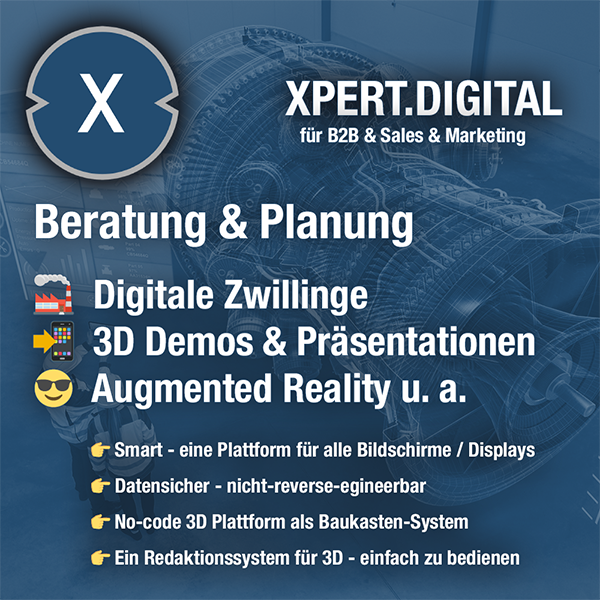
We are there for you - advice - planning - implementation - project management
☑️ SME support in strategy, consulting, planning and implementation
☑️ Creation or realignment of the digital strategy and digitalization
☑️ Expansion and optimization of international sales processes
☑️ Global & Digital B2B trading platforms
☑️ Pioneer Business Development
I would be happy to serve as your personal advisor.
You can contact me by filling out the contact form below or simply call me on +49 89 89 674 804 (Munich) .
I'm looking forward to our joint project.
Xpert.Digital - Konrad Wolfenstein
Xpert.Digital is a hub for industry with a focus on digitalization, mechanical engineering, logistics/intralogistics and photovoltaics.
With our 360° business development solution, we support well-known companies from new business to after sales.
Market intelligence, smarketing, marketing automation, content development, PR, mail campaigns, personalized social media and lead nurturing are part of our digital tools.
You can find out more at: www.xpert.digital - www.xpert.solar - www.xpert.plus



